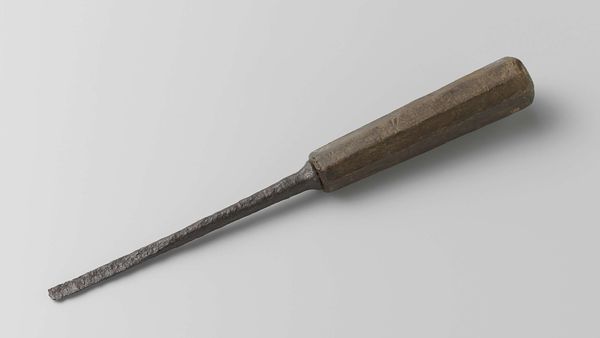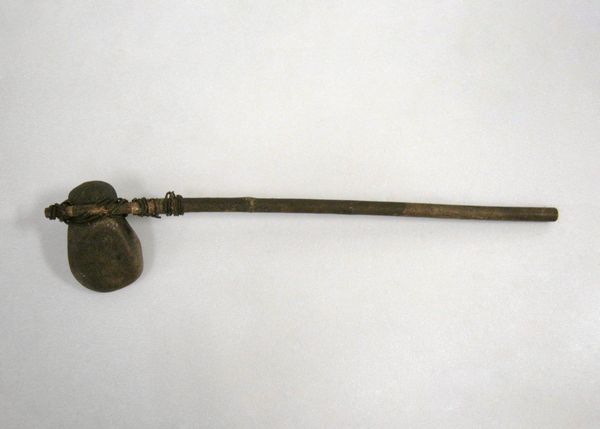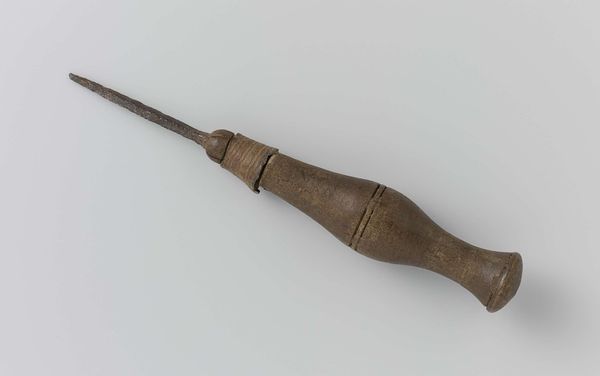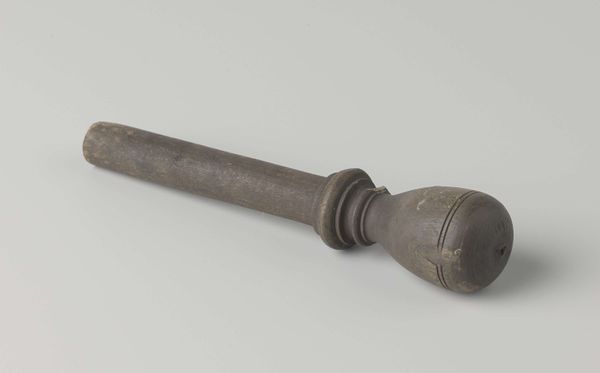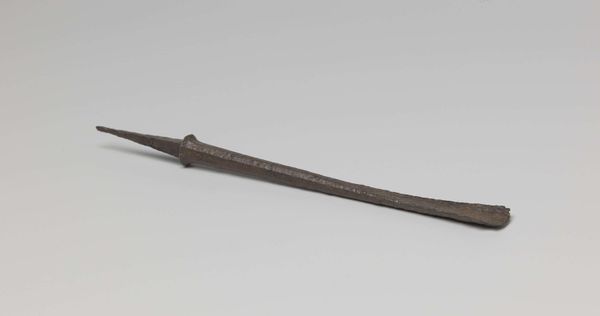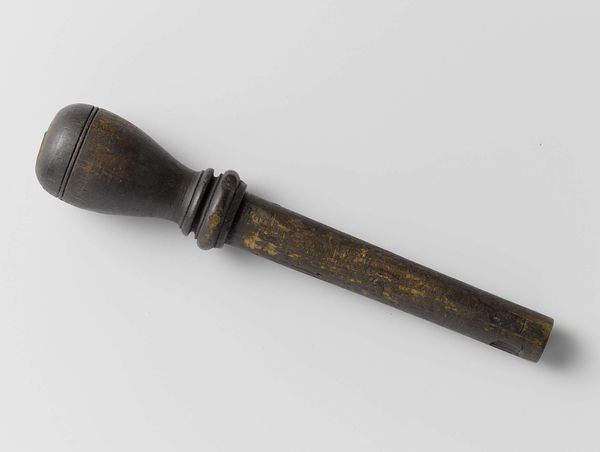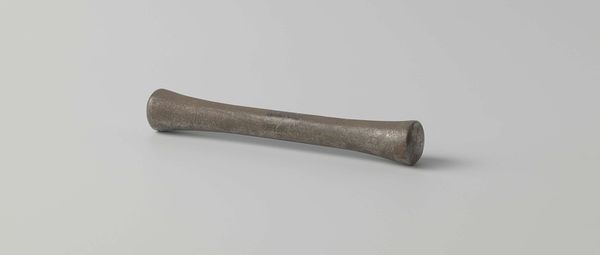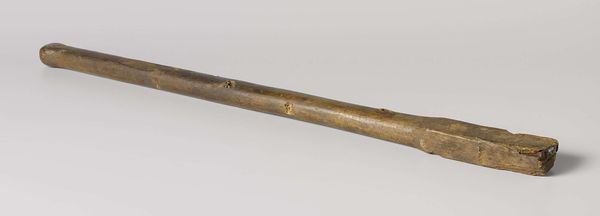
metal, sculpture, wood
#
medieval
#
metal
#
sculpture
#
sculpture
#
wood
Dimensions: length 9.2 cm, diameter 2.5 cm
Copyright: Rijks Museum: Open Domain
Curator: What an unassuming object. The Rijksmuseum holds this burin, or engraving tool, dating back to about 1590. It's crafted from both wood and metal. Editor: My initial reaction is one of subdued appreciation. The smooth handle, contrasted with the textured metal shaft, is quite pleasing. It projects a feeling of deliberate purpose. Curator: It's crucial to remember that an object like this isn't merely a tool; it's an extension of the artisan's body and mind. The handle’s design speaks volumes about the engraver’s socio-economic conditions, their relationship to the guild, and their potential for upward mobility through skill and craftsmanship. Editor: I see what you mean. The form certainly follows function, but the smooth, almost sensual curve of the handle is notable. Notice the transition from the thicker knob to the narrower grip, segmented by those fine rings; it is perfectly designed to fit the hand. Curator: Precisely. Consider that printmaking, enabled by tools like this, provided a visual language that spread ideas rapidly. From scientific diagrams to religious iconography and political satire, such works permeated every strata of society and shaped early modern social and cultural narratives. It shifted the focus from elitist patronage toward mass culture. Editor: I'm drawn to the materiality—the way the light reflects off the worn surfaces, highlighting its age and the countless hours of labor. The tool embodies the engraver's interaction with the medium, it shows process and craftsmanship. Curator: The level of detail such tools allowed helped redefine conceptions of authorship. While workshops were often collaborative endeavors, the dissemination of printed material democratized knowledge and contributed to a rise of a print culture. So in examining this burin we touch on vital shifts that propelled Western society from medieval constraints toward the Enlightenment. Editor: Reflecting upon your points, I see now how easily we can overlook the influence of humble tools. It’s easy to get caught up in the grandeur of the art they help create, losing sight of the elegance and impact held in the instrument. Curator: Indeed, such tools offer profound insight into historical narratives concerning agency, craft, and technological innovation. It highlights just how material objects mediate human expression.
Comments
No comments
Be the first to comment and join the conversation on the ultimate creative platform.
